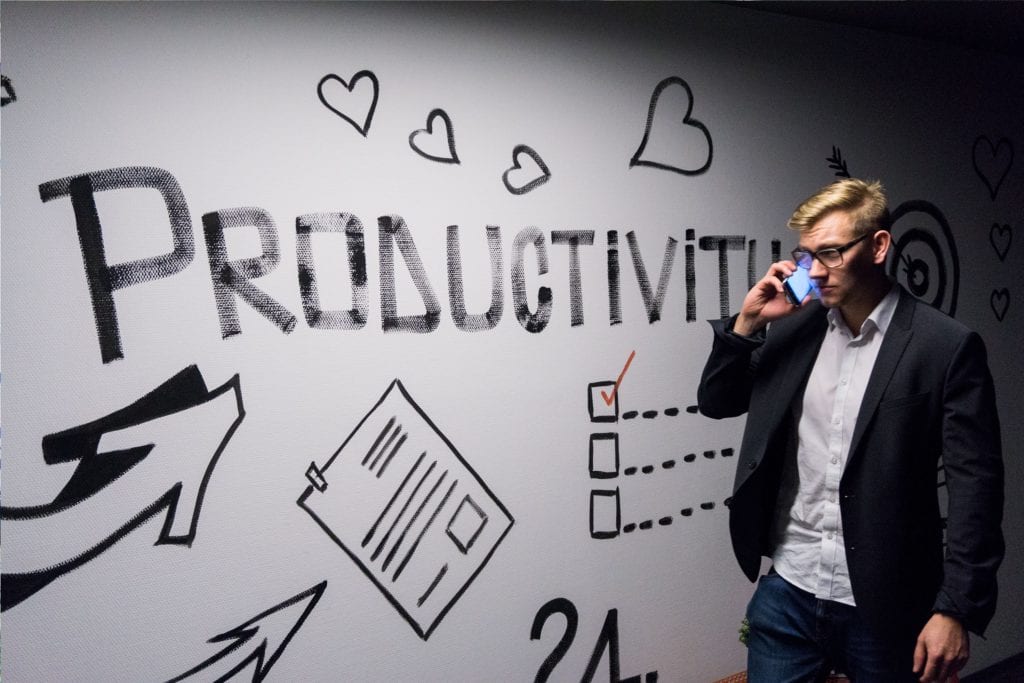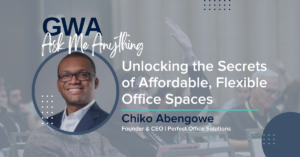An Entrepreneurial Operating System (EOS®) is a business model that helps your team develop a shared vision and turn it into goals at different milestones that you evaluate regularly and then prioritize other tasks as a result of those evaluations.
For example, an EOS® approach would have your team develop a vision for where they see the company in 3, 5, and 10 years (or maybe 1, 3, and 5-year goals, depending on your business needs). Then you’d develop annual, quarterly, and monthly goals by turning the trajectory you already have into a timeline.
Weekly meetings would follow a strict format of having your team report positive progress toward their small, 90-day goals (called “Rocks” in EOS®). Negatives are also reported, but rather than discussing them right away, the members of the meeting would prioritize the problems that need to be solved based on which ones will have the greatest impact on the overall goals.
EOS® sees a company as having Six Key Components™—vision, people, data, process, traction, and issues, and they offer toolsets to help manage these elements in a way that keeps moving your company toward its goals.
Why is an EOS® Important for Coworking Space?
“The best time to plant a tree is 20 years ago—or today.” This paraphrase of an ancient Chinese proverb was also Katina Koller’s response to when coworking spaces should start looking at implementing an Entrepreneurial Operating System®. Koller is a licensed Entrepreneurial Operating System (EOS®) implementer, Vistage Chair and Executive Coach with the Foundry Community. She is passionate about helping organizations to achieve strong and sustainable financial performance that aligns with their goals.
EOS® is a straightforward model for streamlining business, unifying teams, and planting the seeds for business for growth. According to Koller, “EOS® is really a re-norming of your organization.”
While EOS® is not industry-specific, meaning the process is the same across industries. Koller explains that some EOS® tools can be tweaked for coworking spaces—and can yield great results regardless of if your team is 2 or 200. “It just depends on your company,” Koller says. “It’s really up to you and what resonates with your team.”
According to Koller, a high-functioning team using the EOS® approach can set a 3-year goal and meet 80% of it by the end of their second year. Why? Part of it is the clarity of the plan. Koller states that EOS® essentially results in a 2-page business plan that everyone on your team has worked together to create, define, and apply to each part of your organization (from their own job descriptions to issues that need to be addressed in meetings). As part of that business plan, Koller says that your team needs to choose five to seven items to go on your scorecard—things that you can measure your success with.
“What gets measured gets done,” Koller says, explaining how these metrics become the foundation for setting your short- and long-term goals.
According to Koller, one of the tools that EOS® offers is the Identify, Discuss, and Solve Model (IDS™), which is used in meetings to streamline the process of identifying and solving problems while also prioritizing things like the celebration of success—a practice which in turn bonds your team and helps them work together better.
Benefits of an Entrepreneurial Operating System
Koller explains that one of the benefits of the EOS® toolbox is their “Delegate and Elevate™” approach to planning. According to Koller, every task you have in a given day falls into one of four categories: something you love and are good at; something you like and are good at; something you don’t like and are good at; and something you don’t like and aren’t good at.
While many members of our team may find their days filled with tasks that they don’t like and/or aren’t good at, Koller says the “Delegate and Elevate” approach seeks to increase productivity by moving around these tasks. By having each person evaluate their work in this light, she says many teams are able to move workaround and/or hire someone who will be better at (and find more enjoyable) the tasks each team member doesn’t see as one of their strengths.
When people are working within their passions and their strengths, they’re more productive.
Koller states that part of the EOS Process® also involves everyone analyzing not only their own work within the company but also the structured roles of the company independent of the people in them. EOS®, she explains, asks businesses to project-specific roles and job descriptions for the end goal (the 5- or 10-year goal) for your planning process, not the current moment. In an industry that shifts as quickly as coworking, Koller says this may even involve creating and defining roles that don’t exist yet.
“You start with the future,” she says.
After that, you take the roles and start asking if people’s current roles line up with their ability and passions—a discussion everyone has a say in.
“It creates complete transparency in your organization,” Koller says. “There’s nowhere to hide.”
Why use an Entrepreneurial Operating System (EOS)
Even aside from clarity and business results, Koller says EOS brings strength to a company because of its focus on developing and maintaining a team—and it is this strength that Koller says makes EOS a good idea even if your team only has one or two people.
“You have to have a vision, and you have to have a plan to meet that vision,” she says. Working together as a team to create a shared vision at a macro-level as well as at a smaller, 90-day level (as is the case when defining Rocks) creates the buy-in that helps retain the right team members. Once you have that shared vision, EOS continues the team emphasis through the creation of the business plan and other business strategy (marketing avatars, unique value propositions, etc.).
Although EOS uses “work smarter, not harder” strategies, Koller says it’s actually more about working healthier—about helping the culture of your team be the strongest and healthiest it can be for everyone involved, because that health drives productivity and growth.
“The assumption is that you have the knowledge and the expertise for your industry,” she explains. “We just need you to be more effectively communicating and working with each other.”




